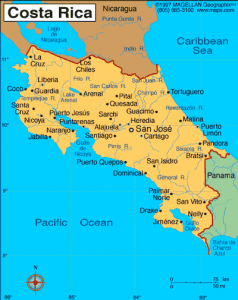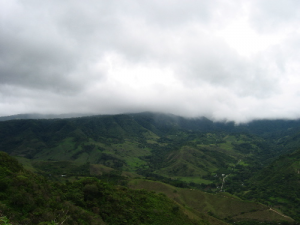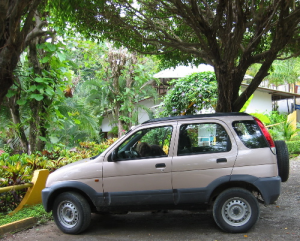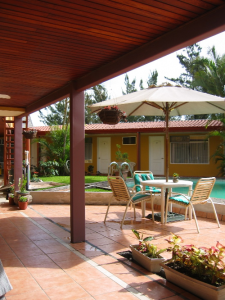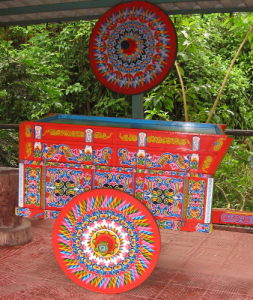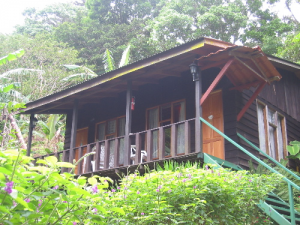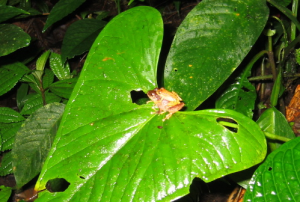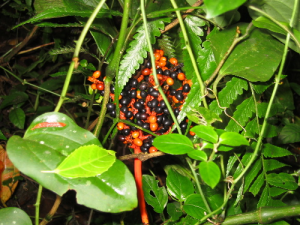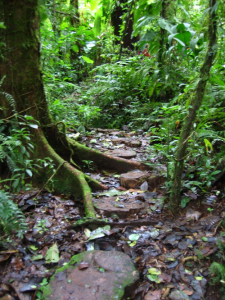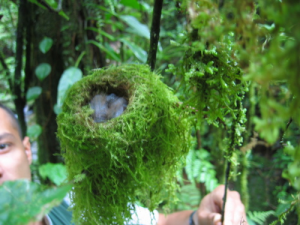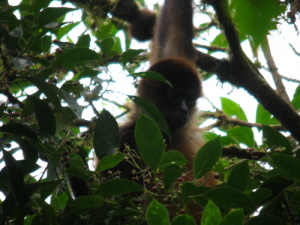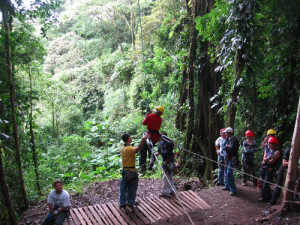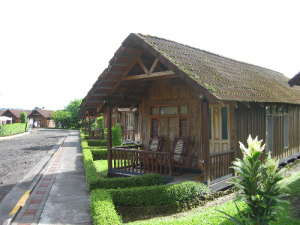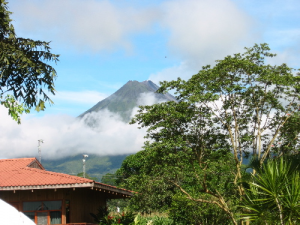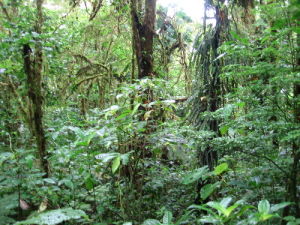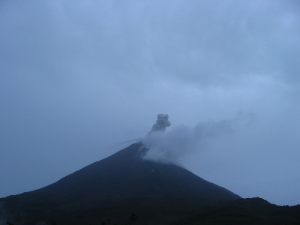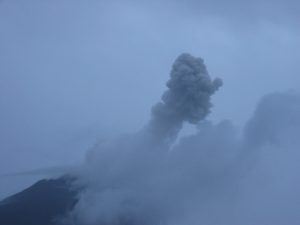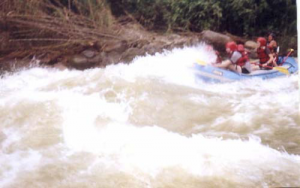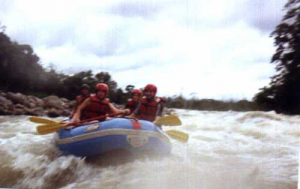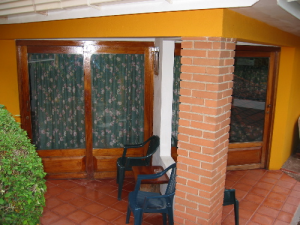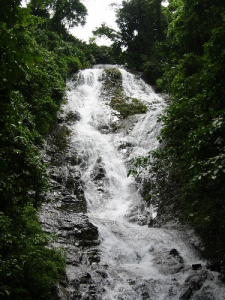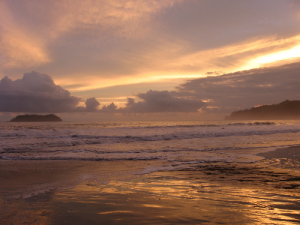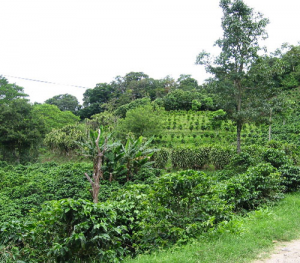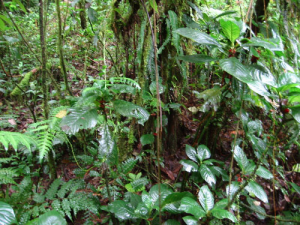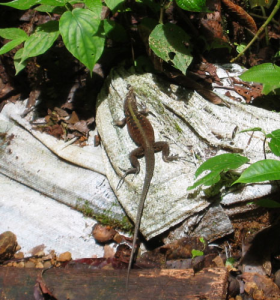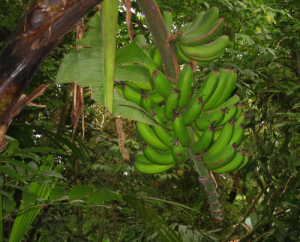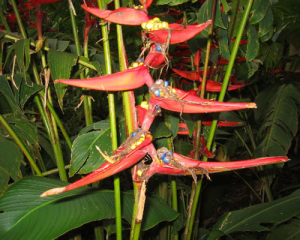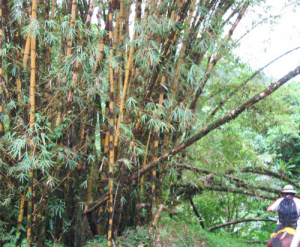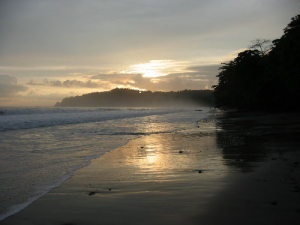Introduction
This trip was planned as a birthday gift to a young energetic nature loving person. I chose Costa Rica because it offers more varied activities than the usual seaside resorts and because it boasts some spectacular parks and reserves.
Costa Rica is located between Nicaragua and Panama. It is a five-hour flight from Toronto and there is a two-hour time difference with the EST.
Christopher Columbus supposedly chose the name, which means rich coast. This choice makes perfect sense when you see the rich soil and the lush vegetation. But the most striking fact about Costa Rica is that it is a crossed by a chain of mountains. It is the link between the Rockies in North America and the Andes in Chile. These are young mountains that boast several volcanoes, some of which are still active, which explains, in part, the richness of the soil.
San Jose (Day 1)
We were met at the airport by the car rental rep who drove us to their office so I could sign the papers and then we were pointed in the direction of our hotel and we were….. ON OUR WAY!!!!
This first hotel was very clean and the owner very talkative and helpful. She suggested we drive into San Jose, the capital, which we did. It started raining so we went into the museos banco central de Costa Rica. It includes three museums in one building: the most interesting of which is the Pre-Columbian Gold Museum. Unfortunately the power went out so we viewed the exhibits in semi darkness. There was a lot of beautiful animal shaped gold jewellery. I was disappointed in the museum boutique though, which had very little interesting objects.
After the visit we walked around in the rain, stopped in a music store and bought a set of CDs for the car. “Musica para bailar” (music to dance) said the salesman. We grabbed a bite to eat and headed back to the hotel in total darkness. There are many one-way streets but few street name signs so it was a bit of a challenge, but we managed.
The next morning the sun was shining, we had breakfast outside by the pool, it was very pleasant.
Then we set off for the first leg of our trip: heading for the Monteverde region, which is a high mountain area south of lake Arenal.
Mont Verde (Days 2 and 3)
We stopped in a little town called Sarchi along the way. It is renowned for it’s painted wood objects; the most famous of them being the colorful wood oxcarts that you see everywhere.
The last 40 km were on very very bad roads. Not paved, nor dirt, they are rock roads and they go up and down mountains in winding and very steep inclinations. I did put the car in four wheel drive mode but eventually went back to regular driving as it really did not help much with the road conditions (it might have, if the roads had been wet). Once we got used to the rattle and shake we started appreciating the scenery which is breath taking! The mountains are everywhere, covered in an infinite variety of textures and shades of green. The taller ones are often wrapped in clouds while the valleys are dotted with cows and horses. There are fruit trees of all sorts and you find small stands in every village offering piles of mangoes, papayas, melons, bananas, pineapples, and avocados. Speaking of every village, I was surprised to see how many schools we encountered. The elementary school children all wear a white shirt with navy pants and the high school ones wear a pale blue shirt. It was intriguing to see them walking along the roads throughout the day, it made us wonder about the class schedules.
We finally made it to Santa Elena, which is the village closest to the Monteverde preserve. Our hotel consisted of little cabins scattered in the forest on a hillside. Ours was the highest one and lugging my suitcase all the way up those stairs made me regret having packed so much gear (although I did use all of it).
As it was late afternoon we immediately booked a night walk in the cloud forest. We were picked up at the hotel, which suited me fine as I was in no hurry to get back behind the wheel. We met our guide at the entrance of the Monteverde biological cloud forest preserve, he handed out flash lights which were very useful in helping us to see where we were stepping as there were no moon or stars to light our way. Many steps punctuate the path so I found myself looking down most of the time. The guide did point out nocturnal animals such as bats and also certain frogs. He explained to us that the female frogs are larger than the males because they have to carry them on their back during mating. The male hops on and that is said to stimulate the female’s hormones and encourages her to produce eggs, but it can take a few days, so the male just stays there waiting to fertilize the eggs, while the female goes about her business eating and swimming. Some males die of hunger that way.
It was a pleasant walk, the temperature was cool and damp and even if we did not see a lot it gave us a good “feel” of the forest.
The next morning we went on a four-hour hike with a naturalist guide in the Santa Elena reserve. It is less famous thus less crowded with visitors but just as interesting to explore. Our guide explained to us the difference between primary forests (which have never been cut down) and secondary forests, which were cut down at one point but allowed to grow back since. In this area a group of Quakers who were fleeing the USA can be credited for stopping the cutting down of forests and protecting the bio diversity of the area.
Our guide was able to imitate the sounds of many different birds and would call them; he was also able to identify those that were around. He had a telescope mounted on a tripod that he carried on his shoulder, which he would set up every time he spotted something interesting. This is how we got to see the famous Quetzal, all shimmering reds and greens. This one did not have the typical long “tail” because he had mated and was now helping feed the young inside the nest. There was another bird whose cry was very similar to the creaking of a metal garden door that seemed to follow us through the day. We saw several bird nests. It seems that birds have figured out that living near the trail was not dangerous to them as man is not an aggressor but he seems to scare away other predators.
At one point we encountered a group of spider monkeys. They are rather quiet (compared to the Howler monkeys) except when a fight erupts and then you can hear them squealing and branches breaking as they chase each other. They travel in groups and seem to never stop moving, that makes it hard to photograph them but our guide succeeded in catching a few, using my camera and his telescope. It was a great morning!
In the afternoon we went for something sportier: a canopy tour. Not one of those suspended bridges things but rather, hanging on steel cables and swinging from one platform to the next over the top of the forest. Here is how it works. You get outfitted with harnesses that tie around your waist and your upper thighs similar to those worn by rock climbers. They attach a pulley and a safety line to your harness. You also have to wear a very becoming yellow construction helmet and a pair of heavy construction gloves. You then climb to the first plat form, and get hooked to the cable with your pulley and the cable. You then step off the platform, bring up your knees and start sliding along towards the next platform. The speed depends on the angle of each wire. You can slow yourself down by pulling down on the wire behind your head with your (gloved) hand. This particular set up had 16 different “runs”, some long some short, some slow some fast. It is not really scary but there is not much time to admire the scenery. They also have one Tarzan jump where you free fall and then swing over the treetops, but I passed on that one. It was fun and different afternoon!
After supper we visited a frog zoo where we got to see some pretty wild specimens such as the green and orange one that is on every other T-shirt in Costa Rica. We saw some blue ones and a variety that is called the glass frog because its skin is transparent (you can see their organs through their belly skin). All this was done in the dark with a guide wielding a single flashlight, so as not to disturb and confuse the poor batrachians.
Arenal (Days 4 and 5)
The next day we hit the road again. This time we were headed for the Arenal volcano by way of circling lake Arenal. It is not very far but once again the roads made it a rather long trip. This time the challenge was different; the roads were paved but had enormous holes, which you had to drive around which made for a very zigzagging drive. Sometimes there were so many that it was not a matter of avoiding but rather choosing which ones you were willing to drive into. The view was again breathtaking with mountains all around and the lake appearing through the woods. This is a huge man made lake and dam that was created to hold the mountain waters in order to provide electricity to the country. We saw the volcano from far away but were unsure of its identity as it was wrapped in clouds as were a lot of the surrounding mountaintops.
We found our hotel in La Fortuna, which is the village closest to the volcano. Again nice little wood cottages (thankfully on flat ground), each with a balcony and rocking chairs to view the volcano.
The staff was very pleasant, like everyone we talked to in Costa Rica. As soon as we got there we booked a late afternoon tour that included a walk in the rain forest, a viewing of the volcano and a visit in a hot springs facility. The rain forest was…rainy. I must confess I do not see much difference between the cloud forest and the rain forest. I know one is higher than the other thus is boasts different flora and fauna but I could not tell the difference unaided. I was a bit miserable walking in the rain but it was well worth it.
When we stopped at the volcano-viewing platform we were sheltered and got to see some rocks rolling off the slopes of the volcano. We also got to see a group of toucans nearby. Suddenly we heard an explosion and saw a big dark cloud rising up from the crater.
We never got to see any lava because that is only visible at night and both nights that we were there (we got up at 5 AM to check) the mountain was covered in clouds. The swim in warm water was more than welcome after the rain. It was dark so I could not really see the landscaping or the degree of cleanliness…just as well I suspect.
The way these centers are set up is that they have many pools with water at different temperatures. The hottest, (presumably straight out of the mountain) was too hot to even keep a hand in it for more than a few seconds. The others pools were very nice, they even have built in recliners so you can watch the volcano lying back and some of them even have swim up bars. What more can you ask for (besides a towel)?
We slept very well that night. So well in fact that the next day we felt brave enough to go white river rafting!
This involved removing my glasses, donning an ugly football helmet, climbing into a rubber raft and careening down a rocky river. It also involved a lot of splashing and a weird guide whose idea of fun was yelling commands and scaring us with wild tales about the next dip. Oh and some paddling on our part, though minimal. I enjoyed the quiet parts, when we had time to look at the surroundings. I am told that those with good eyesight or contact lenses saw some howler monkeys along the banks. We did stop mid way on a little beach for a snack of fresh fruit. This was very enjoyable. The people we did this activity with were very nice and thankfully did not care to tip the raft over. I was asleep by 7:30 that evening.
Manuel Antonio (DAYS 6 and 7)
The next morning we left for the longest of our drives as we were headed for the Manuel Antonio Park on the pacific coast. It turned out to be a 5.5-hour trip on relatively decent roads. We saw lots of butterflies along that road, as well as a bright green snake and a black and red one. We saw an iguana and many hummingbirds. There was one place where people stopped to see alligators. We skipped it. When we finally reached the coast, seeing the ocean, after all this green, was a pleasant surprise. We got to Quepos too late to take in an excursion so we visited the area and had dinner on the beach in an open-air restaurant. It was pouring but that did not spoil our fun. There was a television set that was playing the final game of the (hockey) Stanley cup. We got a kick of watching it even if Tampa Bay beat the Calgary team. There were violent thunderstorms that night but the sun was shining and the birds were chirping the next morning.
We set off bright and early for a day of horseback riding. We had chosen the company with care hoping to find one that treated its horses kindly. Well…they did, but the horses were very skinny and some had bad saddle sores. That took some of the fun out of it, but it was a pleasant ride and a great way to look at the surrounding nature. The weather was much warmer than in the mountains and there were a lot more wild flowers. I saw some orchids, lots of hibiscus and even some wild Jasmine that smelled wonderful. Water was never far, we heard waterfalls, we crossed brooks, and we saw rivers through the branches so it was no surprise that our destination was a spectacular waterfall. We got to swim in the pool below it. The water was surprisingly not very cold.
Once again the people we shared this activity with were charming, well traveled and very ecology conscious. One of them also spoke excellent Spanish, which allowed for more involved conversations with the owner’s wife who guided us along. Another pleasant encounter! They only problem with horseback riding for me was the trotting. My stirrups were not adjusted properly and the saddle and reins were not quite your traditional English gear to do an elegant canter so I bobbed about gracelessly with my back pack and camera bobbing too…I was sore for a few days but am happy to report I can now sit down without wincing.
When we got back to our hotel we barely had time to change clothes and head for the beach to watch the sun set. I elected to sit down and take photos from a nice dry spot while watching little boys surf the waves. I had just settled down placing my numerous bags all around me when a wave flew up the beach and got all my new bought souvenirs and me soaked! I checked and in the following hour no other wave went that high up the sand. Anyway, as I was wet I decided to take a walk in the surf. The water was very warm. I had expected it to be cold. It was lovely to watch the clouds take on a golden color and slowly fade away.
Since we were too wet to go into a restaurant we went back to the hotel and headed for the pool where we soothed our aching muscles under a starless sky.
San Jose (DAY 8)
The next morning we drove back to San Jose to give back the car and hop on the plane back home.
Conclusion
It was a fun trip. Not a restful one, although we tended to go to bed early as the sun sets around 5 PM. I would recommend it to people who are in shape, and have no back or motion sickness problems. I would also suggest a longer stay as it takes quite a lot of time to travel from one place to the next. As for the weather, if this was the rainy season, the high season must be wonderful. All mornings were nice and it never rained before 4 PM. This is easy to live with. I did not mention the food because it was never spectacular but always acceptable. Breakfasts were always the same: fresh fruit, rice and black beans, and scrambled eggs. The other meals usually revolved around the rice and beans with meat or fish added. It was always plentiful and tasted all right. Spanish is the national language but English is understood everywhere. The Colon is the local money but the American dollar is accepted everywhere (often prices are given in USD).
We did not go to the Caribbean side as I had visited briefly while on the cruise last year and, as I said, we were short of time.
